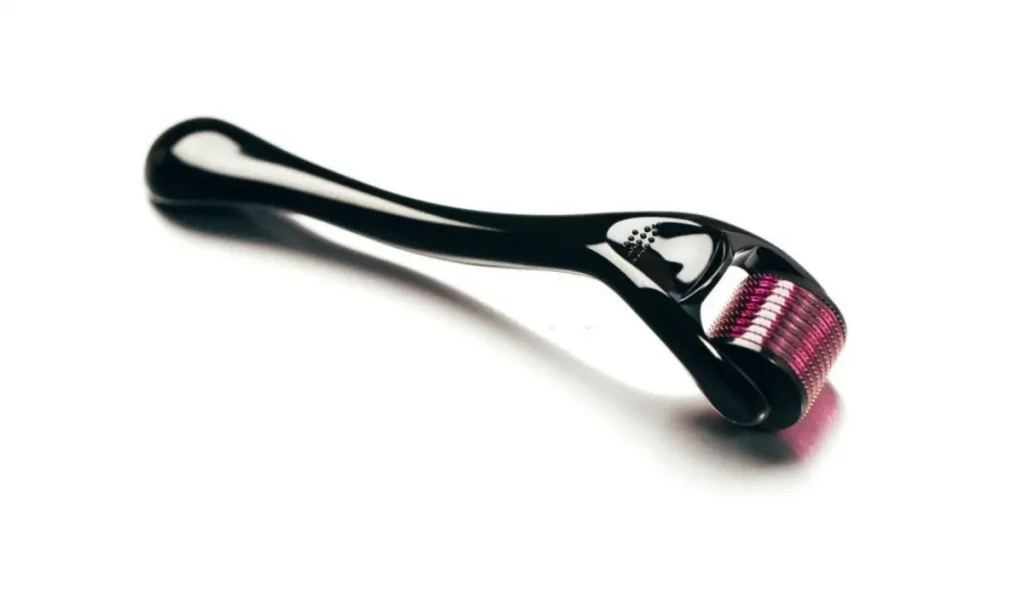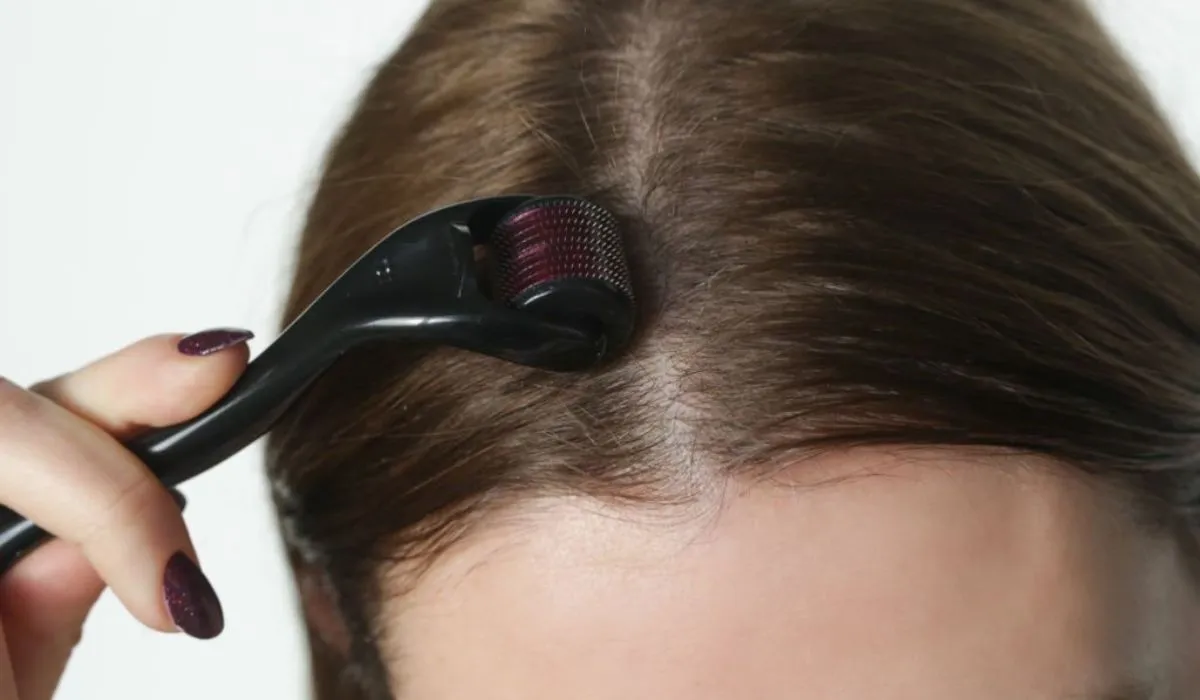Derma rollers, also called microneedle rollers, are handheld devices with hundreds of fine, short needles protruding from a roller surface. When these devices are rolled over the skin, the tiny needles create microscopic punctures in the outer layer without damaging deeper tissues.
This type of superficial needling is referred to as micro-needling. Studies suggest micro-needling the scalp may stimulate hair follicles and improve hair growth in those experiencing hair loss or thinning hair. The minor injuries induced by the microneedles appear to activate wound healing factors and improve blood flow to follicles.
This article will explore how derma roller work for hair growth, their proposed hair growth mechanisms, evidence for their effectiveness, proper usage techniques, and considerations for those interested in trying derma roller.
How Derma Rollers May Stimulate Hair Growth
It is hypothesized that micro-needling the scalp with a derma roller may stimulate hair follicles and increase hair growth through several mechanisms:

- The microscopic wounds created by the needles activate the wound healing cascade, which involves release of growth factors that may stimulate follicle stem cells. This drives more follicles into the active growth (anagen) phase.
- Improved blood flow and circulation provides growth factors, enhances follicle vascularization, and improves delivery of nutrients needed for robust hair production.
- Derma rolling may help regulate sebum and oil gland production. Excessive sebum production and hardening of oil glands associated with certain types of baldness may be reduced.
- The micro-channels formed by the needles allow for enhanced absorption of topically applied hair growth compounds like minoxidil down to the deeper dermal layer where follicles reside.
However, research is still emerging on the efficacy of at-home derma rollers for consistently increasing hair density over extended periods of time. Results seem to vary widely based on proper device use, underlying causes of hair loss, individual skin thickness, and consistency of use.
Evidence For Derma Roller Hair Growth Effects
Early pilot studies on micro-needling have shown some promising results for hair regrowth. A 2020 study on 44 patients found the use of a 1.5mm derma roller once weekly for 12 weeks increased hair count by up to 33% from baseline.
However, high quality randomized controlled trials are still lacking. There are also limitations around ideal needle size, treatment frequency and long-term benefits. While current findings are optimistic about the technology, more research is needed to confirm the efficacy of derma rollers for increasing hair density over time.
How To Use A Derma Roller On Scalp
If pursuing at-home derma rolling for hair growth, proper technique is vital. Specific steps should be taken:
- Sterilize needle roller before and after use with isopropyl alcohol to prevent infection.
- Test first on a small area to assess skin reaction.
- Apply topical anesthetic if needed to minimize discomfort.
- Gently roll in multiple directions across balding areas, applying light pressure.
- Discard roller after 5-10 uses as needles become dull.
- Cleanse post-treatment and apply a soothing cream.
- Use no more than once weekly to avoid skin damage.
Work up gradually to the ideal frequency for your scalp sensitivity.
Maximizing Derma Roller Results
Getting optimal hair growth results from derma rolling requires using proper technique consistently over an extended period. It may take up to 6 months to see noticeable improvements as new growth cycles begin. Being patient and combining derma rolling with other treatments like minoxidil or PRP injections can enhance outcomes. Tailoring frequency and needle size to your degree of hair loss allows customizing an approach for the best results.
Read More:- How Does Hair Fall Cause? Prevention Techniques!
Assessing The Suitability Of Derma Rollers
Derma rollers may not be equally suitable for all cases. They work best for genetic or androgenetic alopecia with moderate thinning. Those with extensive complete baldness or conditions like scarring alopecia will likely see limited benefit from micro-needling.
Having realistic expectations is important. While some regrowth is possible, complete restoration of dormant follicles is unlikely. Starting gradually and monitoring for side effects like irritation is advised when beginning derma rolling.
Professional Micro-Needling Procedures
In-office micro-needling performed by dermatologists may provide superior results compared to at-home rollers. Medical grade devices allow for deeper scalp penetration up to 2.5mm versus most consumer rollers under 1mm. Doctors can also combine the micro-needling with PRP injections or specialized serums.
The costs for professional treatments are substantially higher but provide closer oversight on proper technique. While promising, more research is still needed to confirm efficacy and optimize procedural protocols.
Read More:- 3 Steps to Healthy Hair
Conclusion
In summary, derma rollers show initial promise for boosting hair growth through wound healing activation and improved blood flow. However, individual results may vary greatly depending on proper use, hair loss causes, and managing expectations realistically.
Those interested should educate themselves on the technology and consult a dermatologist to determine if integrating derma rolling into their hair regimen could be beneficial. Ongoing studies continue to uncover the potential of this micro-needling method.

